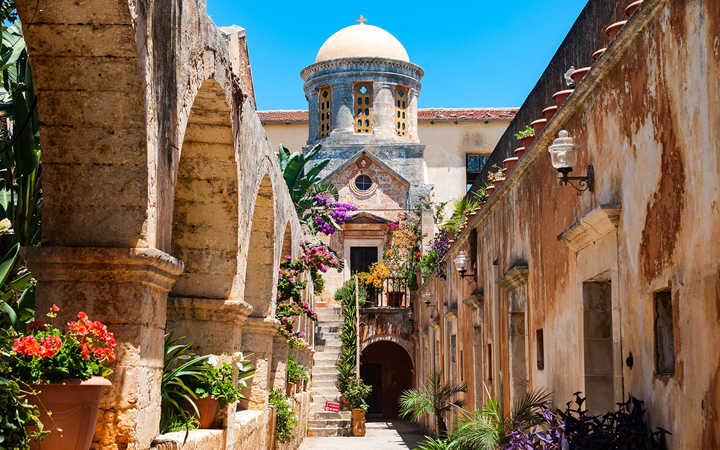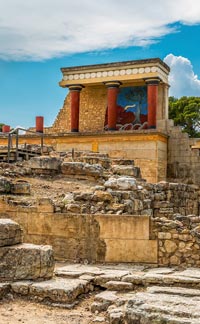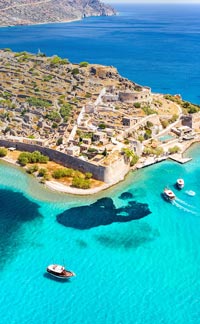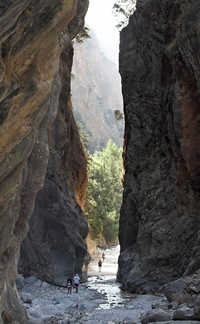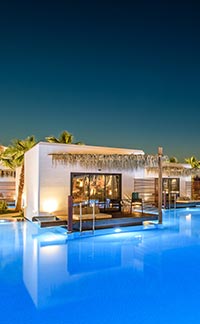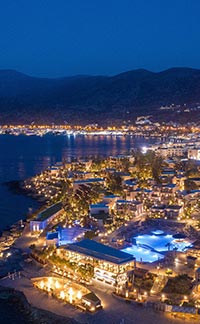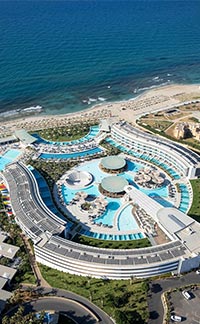About equidistant from nearby Chania International Airport and Gouverneto Monastery (distances to both places being 2.5 km in a straight line), the Monastery of Agia Triada Tzagarolon is on the Akrotiri peninsula in northwest Crete.
It shares with Gouverneto a prominent place at the pinnacle of Venetian-era monasteries. It was built by two brothers, scions of the Venetian-Cretan Jagarolon family (the Latinized form of the name starts with "Tz" because that's the closest letter combination to "J" that exists in the "J-less" Greek alphabet. Construction started in 1611. It took 34 years to finish, a period of time which straddled two administrative rulers of Crete; the Venetians, and the Ottomans.
Under the Turks it was called the Selvili Manastir - Cypress tree Monastery- and was destroyed when the Greeks revolted against their Ottoman overlords in 1821. After things quieted down the monastery was rebuilt in 1834. The occupying Germans used it as an anti-aircraft school during WWII.
The tan-colored rectangle of this complex of buildings encloses a courtyard and a church. A row of cypress trees line the approach to the monastery. There is a domed, emblem-embossed tower at its entrance. The main gate, at the top of a long stone staircase, is framed in Venetian-style columns with triangular pediments. The row of windows along the first floor of the monastery's facade has projecting sills and lintels, and barred windows. The monks' cells are located here, as well as behind the row of windows on the second floor.
Home to a seminary since 1892, the monastery plays a big role in the ecclesiastical life of Crete, and in its public educational institutions. As a Stavropegic institution it is under the direct authority of the Ecumenical Patriarchate of Constantinople. It has an excellent but small museum featuring old wood carvings, famous icons, and ancient codices (Biblically-related manuscript volumes).
The triple-domed church of Agia Triada (Holy Trinity) stands in the middle of the courtyard. Its facade is Venetian, with four columns on raised pedestals, running from the ground up to the facia, set at equal distances along the building's width, and a column-framed, pediment-topped main door. In a corner of the courtyard is the considerably smaller church of Christ the Savior.
The monastery offers its own red and white wines from grapes grown on its extensive holdings, plus their own locally pressed organic extra virgin olive oil. The monastery also produces its own olive oil soap, honey, and vinegar. It has an olive oil mill, a wine press, and large rainwater cistern, and stables. It also has an ossuary, where the bones of those monks and abbots who had gone before the present group are interred.
If you visit only one monastery in Crete, this would likely be your best choice. It's very close to Chania, and if you find yourself favorably impressed you can also visit the Gouvernetou Monastery just a few kilometers to the north.

